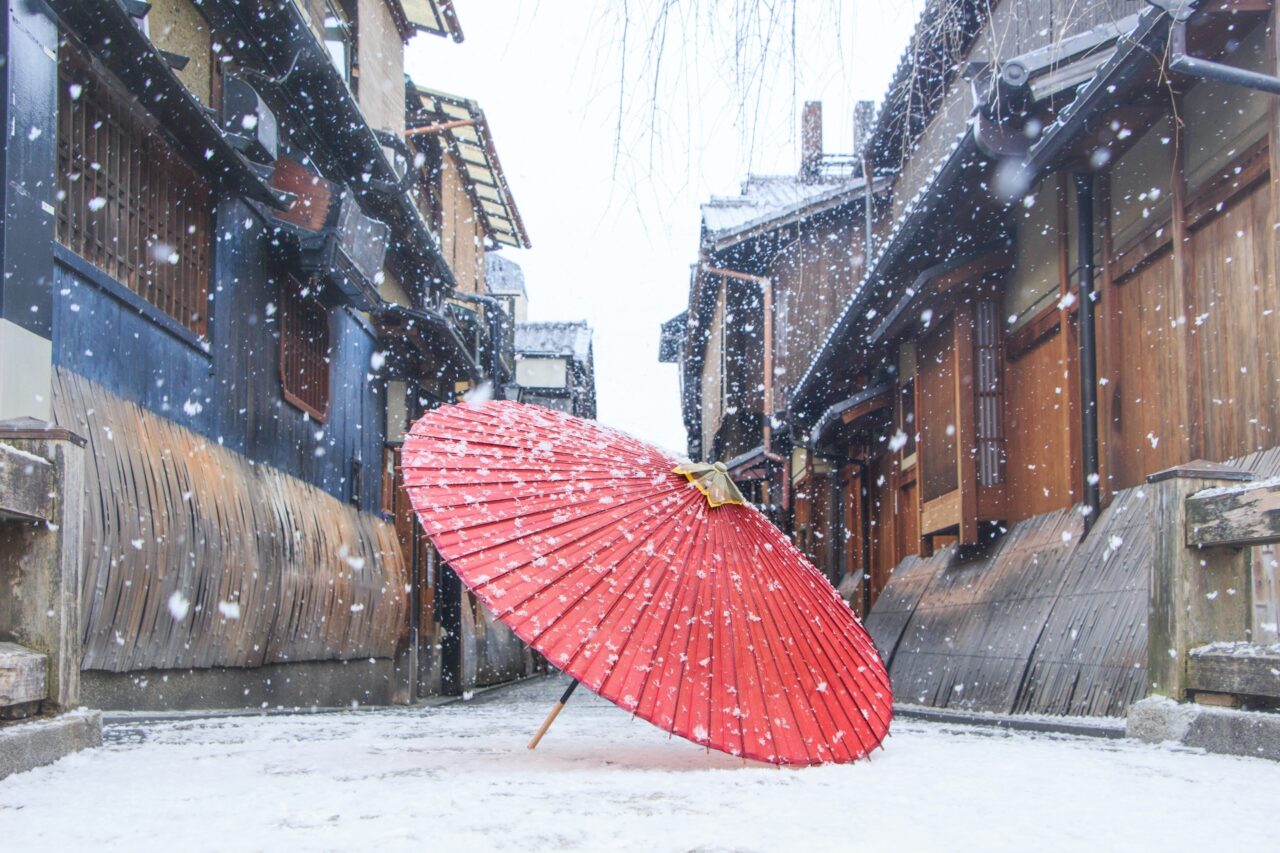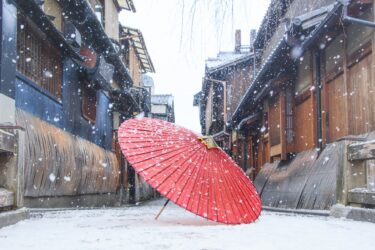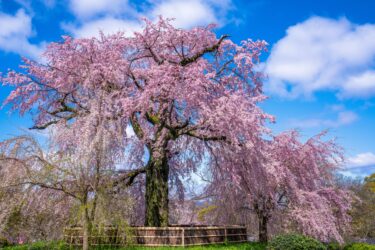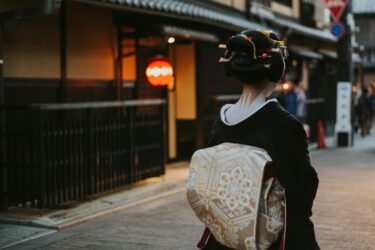When you think of Kyoto, Japan, it’s likely you’re picturing rows of machiya. The unique facades of these traditional townhouses line the streets of some of the most iconically Kyoto neighborhoods. These buildings, with their latticed exteriors and deep-set construction, once formed the backbone of Kyoto’s urban life, serving both as homes and as places of business.Today, while many machiya have been lost or modernized, others have been carefully preserved or restored. If you want a really unique evening, you can even stay overnight in some Kyoto machiya.
What is a Machiya?
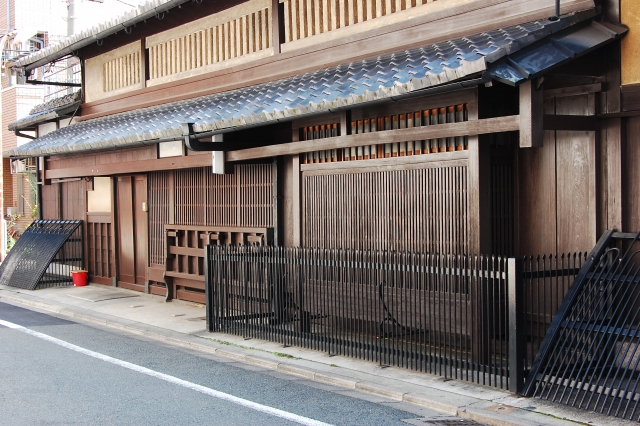
The word machiya (written in Japanese as 町家 or 町屋) refers to a traditional townhouse commonly found in Kyoto and other cities across Japan. These buildings were typically occupied by merchants or craftsmen and often served a dual purpose: a shop or workshop in the front, and a private residence in the back or on the second storey.
Kyoto’s version, called kyo-machiya, developed over centuries, especially during the Edo period (1603–1868). At one time, tens of thousands of machiya filled the city. While modern buildings have replaced many of them, machiya still define the character of many neighborhoods and offer a glimpse into Kyoto’s past.
The Architecture and Layout of a Machiya
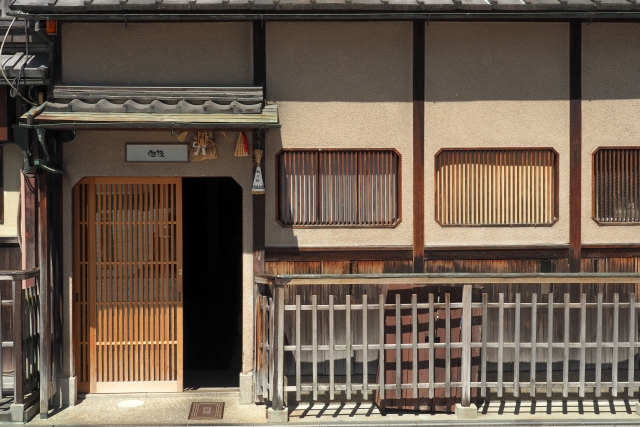
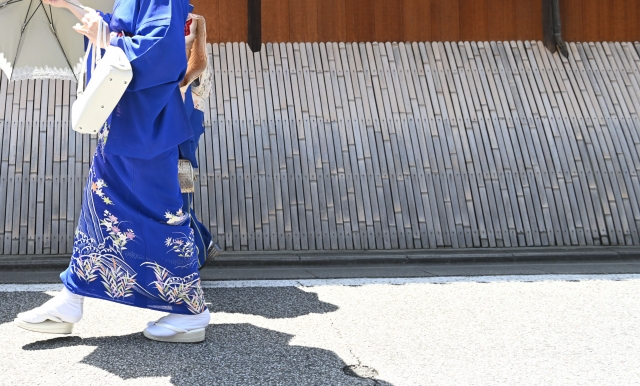
Machiya have a unique architectural style that’s largely shaped by the time period in which they developed. From the outside, they often appear narrow, with wooden lattices (known as koshi) lining the front. This design was originally shaped by property taxes based on street frontage, which encouraged homeowners to build narrow but deep homes stretching far back from the street, which earned them the nickname “unagi no nedoko,” or “eel’s bed.”
Inside, machiya are long and rectangular, often divided into several distinct zones. The front space, which faced the street, was typically used for business or shopkeeping. The living quarters beyond could be reconfigured as needed by using sliding paper doors or dividers. Natural light and ventilation were brought in through inner courtyards called tsuboniwa, small open-air gardens that also lent the home a calming element.
Floors were often set at different heights depending on use: for example, the earthen-floored entrance and workspace (doma) was lower than the raised living spaces.
If you’d like to see an interactive 3D tour within a machiya and digitally walk through yourself, try exploring with the tool on the Machiya Vision Kyoto website.
Where to See Machiya in Kyoto
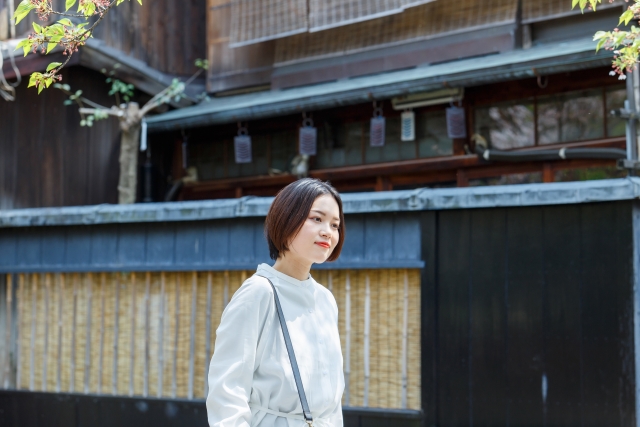
If you’re looking to explore some neighborhoods with machiya during your trip, there are still several districts in Kyoto where many of these buildings can be found intact. While some have been turned into shops or guesthouses, others remain private residences.
Gion

The Gion district is perhaps the most famous area in Kyoto for preserved machiya. Known as the city’s traditional entertainment district, Gion is home to teahouses, geisha establishments, and restored townhouses that line streets like Hanami-koji. It’s a popular place for visitors, especially in the evenings when the lanterns glow.
Nishijin
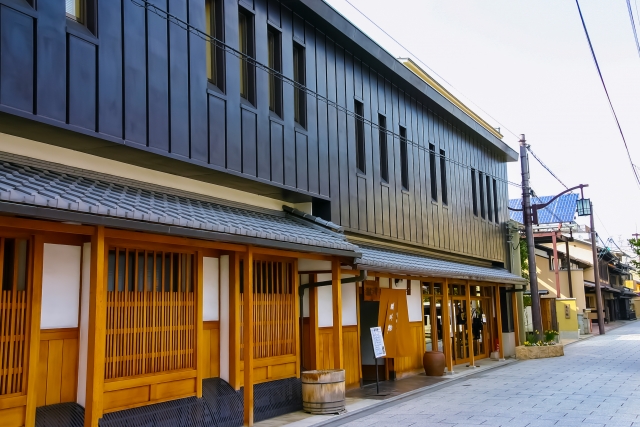
This area in northwest Kyoto is known for its textile heritage, particularly the production of Nishijin-ori (woven silk), often used in kimono. Many of the machiya here are more residential in nature, though the Orinasu-kan (pictured here) is actually a fantastic textile museum open to the public, and a great place to get a glimpse of the inside of a traditional machiya.
Ninenzaka and Sannenzaka
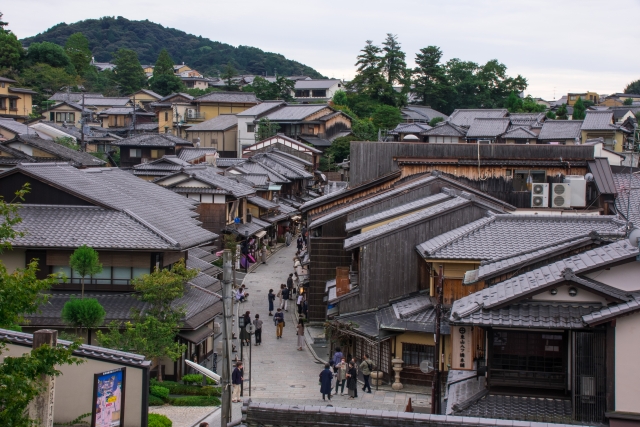
These two sloping lanes near Kiyomizu-dera Temple are among the most scenic in Kyoto. Here, machiya have been converted into shops, cafés, and souvenir stores. The streets are often thronged with tourists, but are still worth a visit, even if you have to retreat to some of the Higashiyama neighborhood’s less famous backstreets.
Sanjo, Teramachi Area, and Pontocho
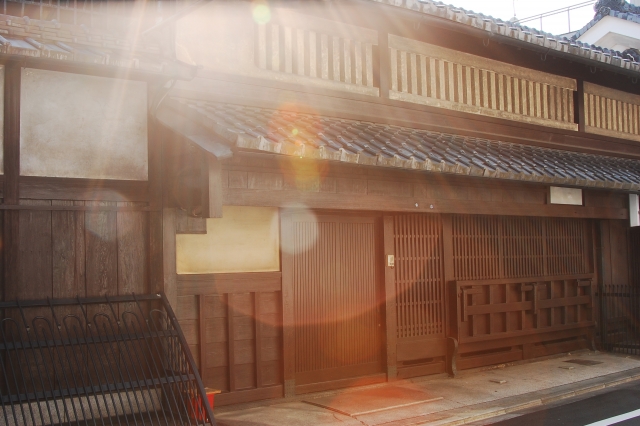
Between Sanjo and Oike-dori streets, especially near the Teramachi shopping arcade, you’ll find a mix of new and old. Some restored machiya house galleries, coffee shops, or ryokan-style accommodations (see our list of recommended ryokan here). You’ll also find a lot of machiya restaurants on Pontocho-dori street, which runs alongside the Kamo River’s left bank.
Staying in a Machiya
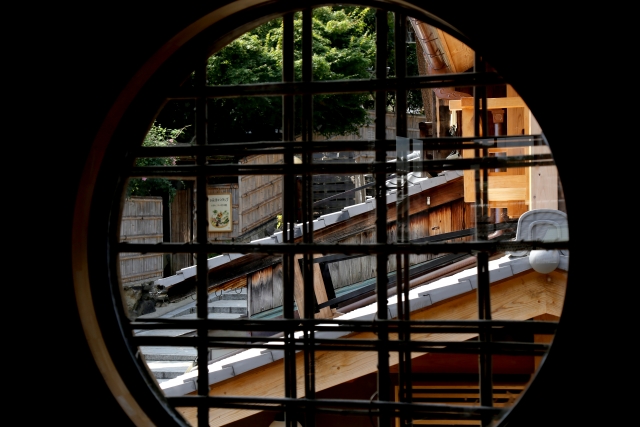
Of course, there’s no more memorable way to experience a machiya than to stay in one overnight. Over the past decade, many Kyoto machiya have been carefully renovated to serve as inns or overnight rentals for visitors. The extent of these refurbishments may vary from place to place, but generally speaking, it should allow you a stay in a traditional building with modern comforts like air conditioning, wifi, and private bathrooms.
You can enjoy the peacefulness of a tsuboniwa garden (a small courtyard garden), sleep on a futon in a tatami-mat room, and start your morning in a space that feels uniquely connected to the city’s past.
Recommended Machiya Rentals in Kyoto
Machiya Residence Inn Kyoto: Offers a variety of fully restored private machiya homes across the city. Ideal for families or groups.
Nazuna Kyoto: A boutique inn with multiple machiya clustered together, offering luxury and attention to detail.
Kyoto Machiya Collection (Fukune, Kamogawa Gardens, Zeniyacho): Manages a range of restored townhouses across Kyoto, offering short- and long-term stays in traditional homes adapted for modern use.
What’s it like to stay in a machiya?
Rooms often include tatami flooring and sliding doors, but bathrooms and kitchens are usually modern. Be aware that noise travels more easily in wooden buildings, so it’s a good idea to be mindful of sound. Of course, you’ll also need to remove your shoes at the entrance.
If you’re looking for something special and don’t mind navigating a more traditional layout, staying in a machiya can be the highlight of your trip.
Machiya Today: Preservation and Modern Use
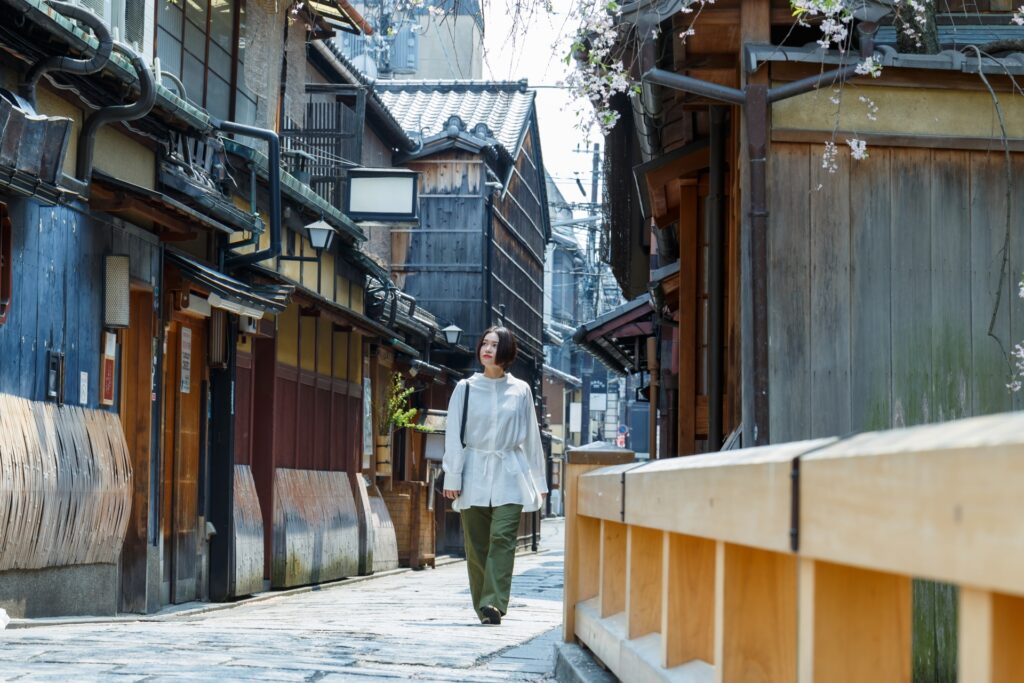
In recent years, there has been a growing effort in Kyoto to preserve machiya, though it’s not without challenges. Many buildings are over 100 years old and require significant upkeep. Without proper care, wooden structures can deteriorate quickly. On top of this, strict building regulations and high maintenance costs make preservation difficult for private owners.
Organizations like the Kyoto Machiya Machizukuri Fund work to protect and restore these buildings, often converting them into community spaces or cultural facilities. Creative entrepreneurs are also finding new uses for machiya, turning them into cafés, art galleries, boutiques, bookstores, and even shared workspaces or event venues.
Tips for Respectfully Visiting Machiya Areas
As you walk through Kyoto’s machiya neighborhoods, it’s important to remember that many of these buildings are still private homes. While it’s tempting to take photos or peek inside open windows, always be mindful of residents and their privacy. If a machiya is not clearly marked as a shop, restaurant, or guesthouse, it’s best to admire it from the outside rather than approaching the entrance. The same goes for photography: it’s fine to take pictures of buildings from the street, but avoid pointing your camera into open windows or private courtyards.
Many of Kyoto’s historic districts, such as Gion and Nishijin, have a peaceful atmosphere, and keeping noise levels low while you visit helps preserve that charm.
Kyoto’s machiya are more than just beautiful old buildings—they’re living reminders of the city’s past and a key part of its cultural identity.
As more visitors discover the charm of machiya, their preservation becomes even more important. By exploring respectfully and supporting businesses that restore and reuse these homes, you can help keep this special part of Kyoto alive for future generations.

